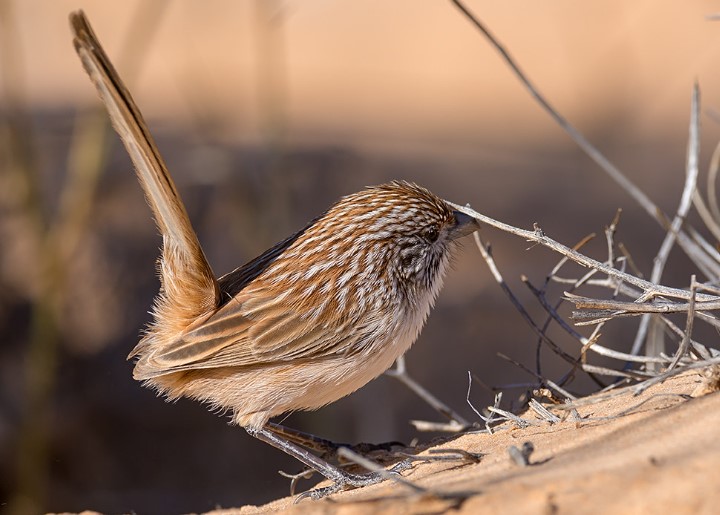Habitats: Bridled Honeyeaters (Bolemoreus frenatus) are active, aggressive nomads in northeastern Queensland rainforests. The yellow ‘bridle’ extending from the bill to the ears gives it its name. Most of the year, it roams locally in small groups of 10–15 birds foraging for food. It can be seen flying around mountain ranges at low altitudes in winter when this honeyeater descends to lower altitudes. Most often, however, it stays above 300 meters in montane forests, where it feeds in the canopy and mid-strata on fruit and arboreal insects, as well as nectar from blossoms.
Identification: Even though both sexes are very similar, the male is a bit bigger. A dark brown-grey color dominates the upper parts, wings, and tail, with white shafts on the back. On the forehead are dusky feathers; the flight feathers are edged in citrine, and the tail feathers are ochreas underneath. Under the eye, there is a bare line of buff skin. Behind the eyes, there is a large white spot. At the ear, the malar line and ear covers are black, with yellow tips at the ear and buff tips at the sides of the neck. A dusky chin and throat are crossed by an inverted, thin yellow V. The rest of the underparts are medium grey-brown, mottled paler, grading to a pale buff on the belly and under the tail. The eyes are blue-grey in color. The bill is black with a chrome-yellow base. The feet are dusky grey in color. In immature birds, the rufous-brown color is more prominent; the red on the throat is more prominent.

Behavior: In montane New Guinea, their behavior and ecology are similar to those of the honeyeater Lichenostomus subfrenatus. It is possible to see large, quarrelsome flocks of honeyeaters when trees are fruiting or flowering, but they are usually solitary and difficult to locate.
Family: Bridled honeyeaters are birds in the family Meliphagidae with distinctive rein-like markings on their faces, endemic to northeastern Queensland.
Diet: In a northern Queensland rainforest, a bridled honeyeater is seen, which feeds on nectar. Especially at scheffleras and mistletoes, the birds congregate in large numbers, sometimes even entering gardens and visiting nearby paperbarks in the forest. Hopping and fluttering through outer foliage and flower sprays, they call noisily and often hang upside down to probe for nectar.
Alternative Name: Mountain Honeyeater is another name for this bird.
Size: Bridled honeyeaters measure about 190–210 mm in length.
Call & Song: Bridled honeyeaters call out a harsh squeak, chaaarh, when feeding. On the other hand, the song of the Bridled Honeyeater is a rippling, descending chirpstchew-tchew-tchew-tchew, run rapidly together and sometimes bubbling up and down.
Nest Building and Breeds: Nesting and breeding take place between September and January. This nest is made from vine tendrils, plant stems, and ferns, measuring 110 x 50 mm. It is lined with pale plant fibers. A nest of this species can be found tangled in vines or twigs up to eight meters high.
Eggs: Bridled Honeyeater laid two smooth, matt white eggs with minute purple-blue and grey-brown dots on the larger end. Approximately 25 x 15 mm in size, eggs are tapered-oval in shape.
Range: It is found between Cooktown and Paluma Range in the montane rainforests of northeastern Queensland. These are commonly found in moist upland forests and rainforests in the subtropics and tropical regions, usually above 300 meters in elevation. During winter, it descends to lower forests, such as mangroves, and can occasionally be seen in more open habitats.
Taxonomy: It was previously thought that bridled honeyeaters and Eungella honeyeaters were part of Lichenostomus, but a molecular phylogenetic analysis, published in 2011, indicated that the original genus was not a natural entity.
Status: There have been no reports of threats or declines in the population. It is considered stable. Although some parts of its range are considered common, the population cannot be quantified.







